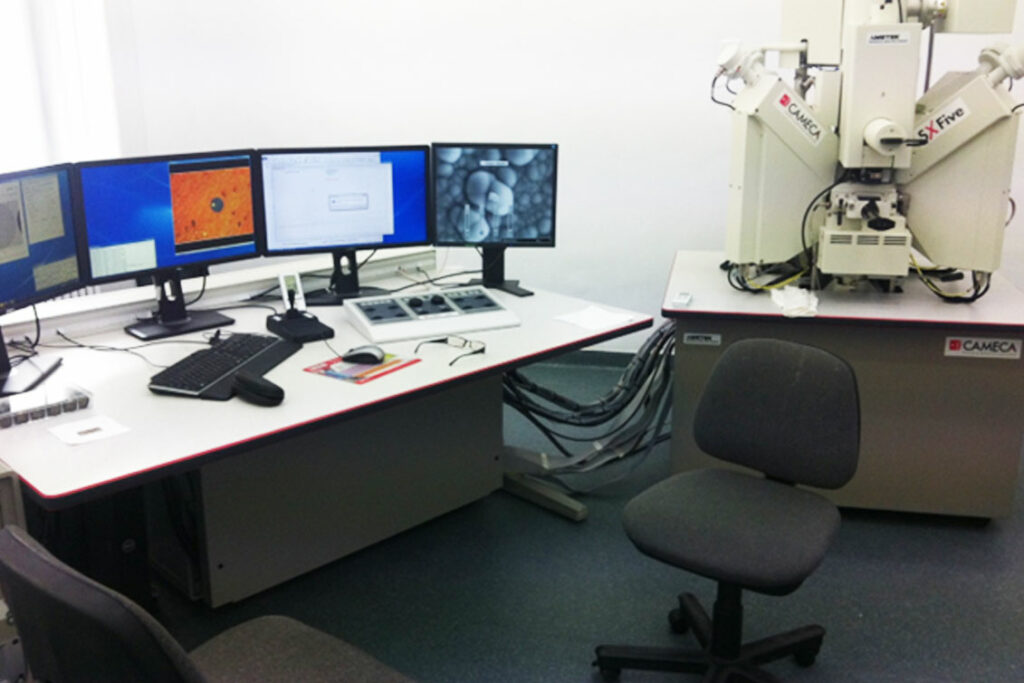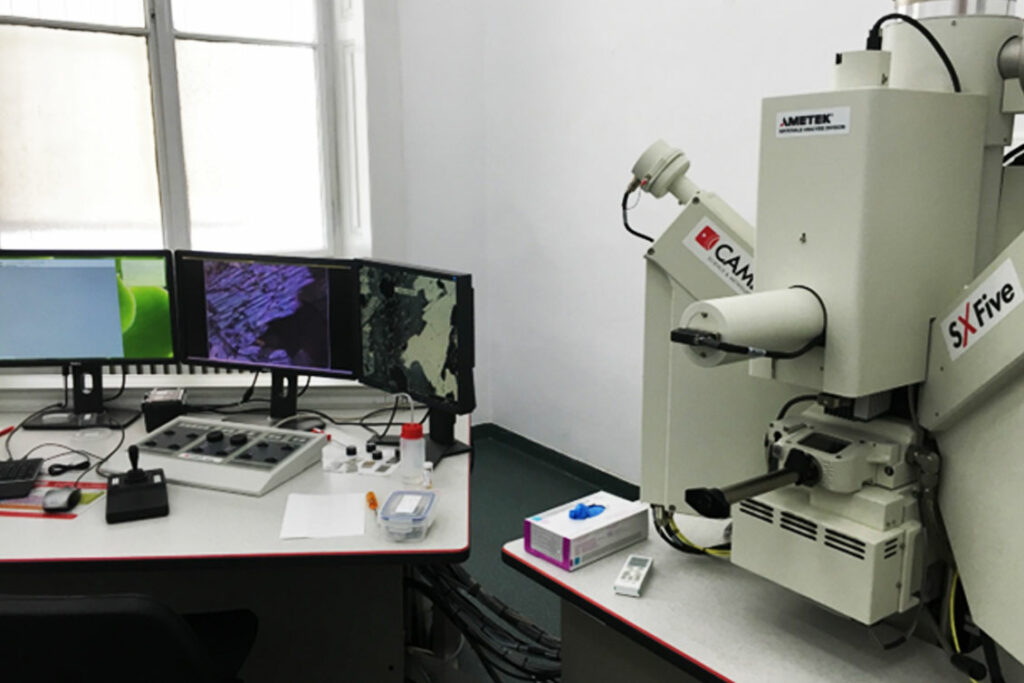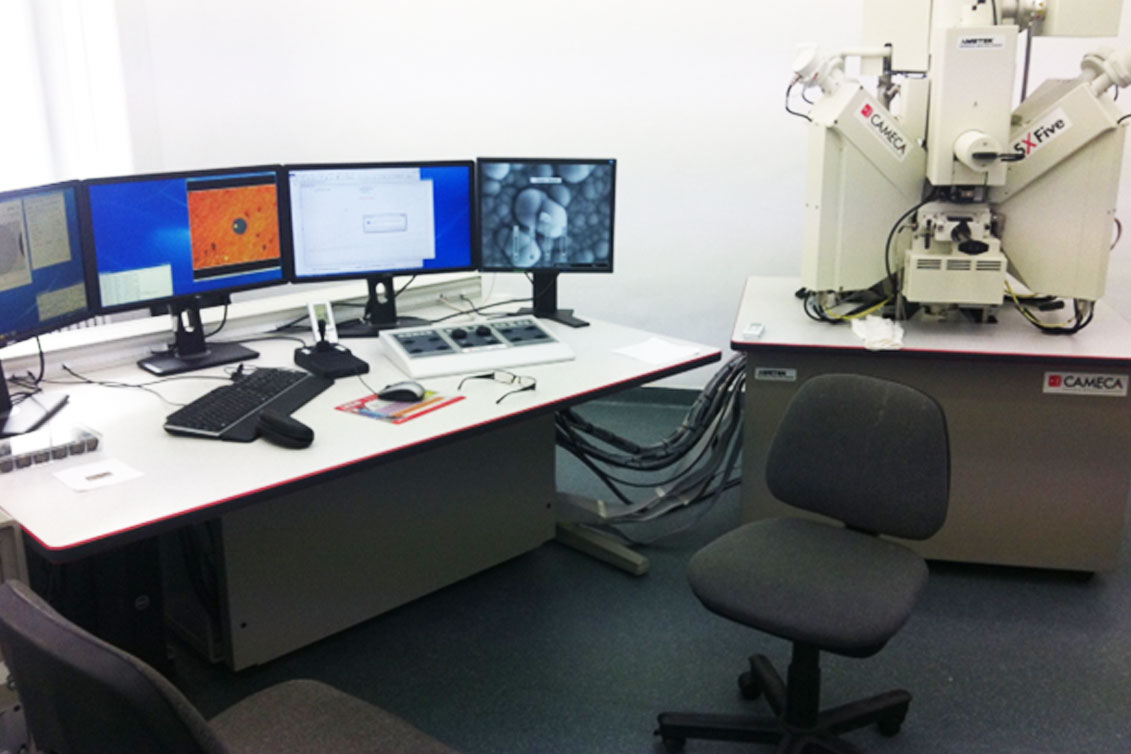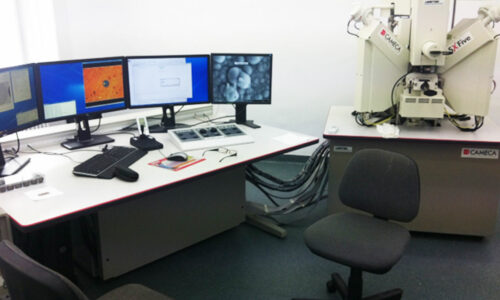The Electron Probe Micro-Analyzer (EPMA) is part of the Geochemistry and Geochronology Lab of the Research Center for Integrated Geological Studies (RCGIS). The RCGIS has research activities in virtually all fields of geology, with a very good scientific output, that put it in a leading position among universities affiliated centers with geological profile in Romania.
The EPMA instrument is a CAMECA SX-FIVE analytical system. It is used for a variety of surface analysis of finely polished natural and synthetic solid inorganic materials. The instrument is fitted with an electron gun capable to bombarding a small sample volume with a focused electron beam of 5 to 30 keV energy. The characteristic X-ray photons emitted by various elemental species are collected by four wave length dispersive (WDS) spectrometers (two high pressure and two low pressure), allowing for a rapid identification of sample chemical composition by recording WDS spectra. WDS spectrometers contain sets of various monocrystals (monochromators) and operate on Bragg law. The analytical method employing such a machine is fully qualitative and quantitative, non-destructive elemental analysis of microvolumes (1mm spot diameter), at the surface of the sample. Our instrument is capable of analyzing elements with atomic number greater than 6 (Carbon), with sensitivity at ppm level, with routine quantification to 1% reproducibility over several days. Beside the four WDS spectrometers, this EPMA is equipped with a EDS detector as well as other microscopy tools such as SE, BSE and CL detectors, which allow for instance simultaneous acquisition of X-ray (WDS and EDS), SEM and BSE imaging. A built-in optical microscopy kit (transmitted/reflected polarized light) allow for a rapid sample inspection.
The instrument is capable of working overnight and can be operated remotely. Its main applications are in geochemistry, mineralogy, geochronology (monazite chemical dating), physical metallurgy, materials science including glass, ceramics, superconductors, cements, microelectronics, biochemistry.


Access policy and costs
The access is open for all research projects in the mentioned areas, carried out by national academic or public founded research entities as well as for research groups from the EUTOPIA network, provided that instrument access has been mentioned in their research applications. The analyses shall be performed either by the lab personnel or by the applicant. In the latter case, a minimal training is required. A wide range of services are also available for industrial applications. These include phase identification, major and trace elements abundances in various crystalline and amorphous materials, elemental mapping at high spatial resolution, SE/BSE imaging, CL screening of fluorescent phases, EDS screening, etc.
Contact person
The instrument is operated and maintained by Dr. Sergiu Dragusanu (sergiu.dragusanu@ubbcluj.ro), to whom all access request should be addressed.
For more information, please visit INFRASTRUCTURE – rcigs (ubbcluj.ro)
Research and publications
A list of publications can be found at: https://biogeo.ubbcluj.ro/cigs/index.php/publications/


